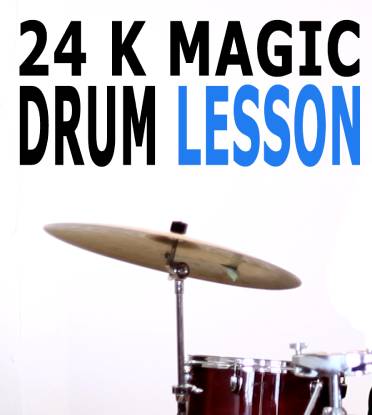What Does Trading Fours Mean?
Most jazz standards are written over a 32 bar form that can be divided in four 8 bar sections. In jazz, each instrument on the band stand can take a turn to play an improvised solo over the 32 bar form. Each instrumentalist, other than the drummer, usually solos over the 32 bar form accompanied by the rhythm section (drums, bass, piano.) When it’s the drummers turn to take a solo, instead of playing over the whole form, he/she will play a short 4 bar solo. The following 4 bars will be played by one of the instrumentalists. This is called Trading Fours and it is usually done 4 times, which covers the length of the entire form (32 bars.)
What Should I Play While Trading Fours?
The drummer can play whatever he or she likes as long as it fits inside 4 bars of time. Traditionally, the hi-hats will mark the time on beats 2 + 4, while all the other drums and cymbals are used to improvise the solo.
Sing the melody
Keeping the tunes melody in mind while you improvise can be a nice way play to solo musically. Sing the melody while you solo (out loud or in your head,) and play rhythmic ideas that highlight that melody. Max Roach and Philly Joe Jones were both masters of this approach.
Showing Off Your Chops
Trading fours is also an opportunity for drummers to “show off their chops.” It’s important to always play musically, however without good technique (chops), you won’t be able to play anything that is impressive technically. In order to play fluidly, the study of rudimental drumming and developing a technical approach is essential in my opinion.
The Moeller Technique
The Moeller technique is an approach to drumming that highlights your bodies natural movements in order to play quickly and fluidly while remaining relaxed. The first step to learning the Moeller Technique is to develop your German Grip Fundamentals. If you’d like to learn more about developing your technique fundamentals, consider signing up to my Free Moeller Technique Mini-Course.
Developing Trading Fours Vocabulary with Rudiments
After learning your technique fundamentals, the Moeller Technique is often developed through the study of drum rudiments. There are many drum rudiments out there, and the study of paradiddles might be a good place to start. However, two rudiments to learn that are particularly useful for trading fours in jazz are the 6 Stroke Roll and the Double Paradiddle.
These 2 rudiments are great because they are both made up of 6 strokes. Therefore, they fit naturally in triplets, which is the fundamental subdivision in jazz music. The other reason these rudiments are great for trading fours is that they use a combination of accented singles as well as “filler” doubles. The single accents are perfect for displacing onto the toms or cymbals, while the doubles create a nice triplet sound on the snare drum.
For private drum lessons at my studio in Montreal, Canada or through Zoom or Skype
Elijah is a university-educated drummer with extensive experience for both teaching and musical performance. Since completing his Bachelor of Music degree at Concordia University in 2010, he has played music across each province in Canada and in more than 20 countries around the world.




